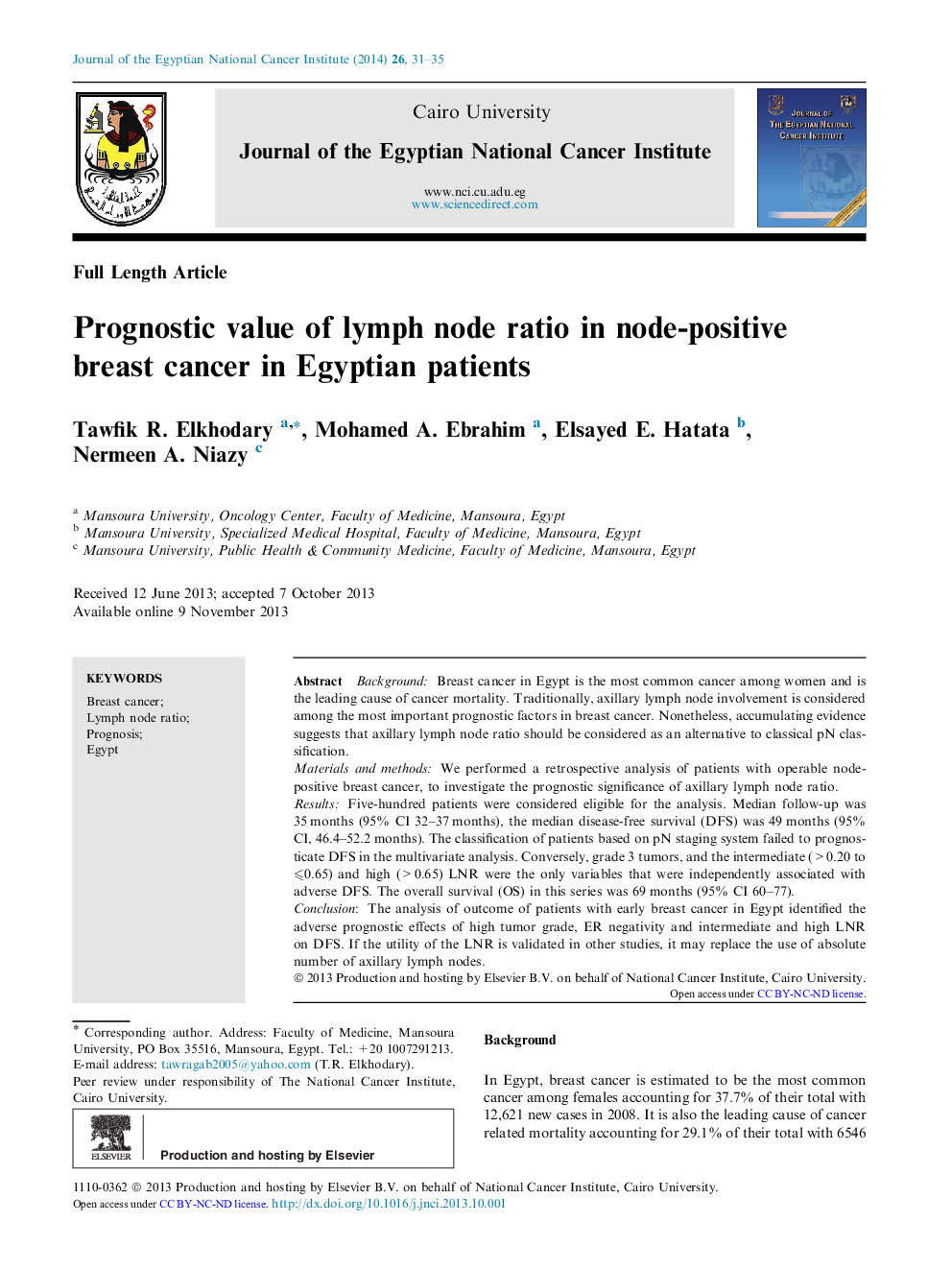| Article ID | Journal | Published Year | Pages | File Type |
|---|---|---|---|---|
| 3989061 | Journal of the Egyptian National Cancer Institute | 2014 | 5 Pages |
BackgroundBreast cancer in Egypt is the most common cancer among women and is the leading cause of cancer mortality. Traditionally, axillary lymph node involvement is considered among the most important prognostic factors in breast cancer. Nonetheless, accumulating evidence suggests that axillary lymph node ratio should be considered as an alternative to classical pN classification.Materials and methodsWe performed a retrospective analysis of patients with operable node-positive breast cancer, to investigate the prognostic significance of axillary lymph node ratio.ResultsFive-hundred patients were considered eligible for the analysis. Median follow-up was 35 months (95% CI 32–37 months), the median disease-free survival (DFS) was 49 months (95% CI, 46.4–52.2 months). The classification of patients based on pN staging system failed to prognosticate DFS in the multivariate analysis. Conversely, grade 3 tumors, and the intermediate (>0.20 to ⩽0.65) and high (>0.65) LNR were the only variables that were independently associated with adverse DFS. The overall survival (OS) in this series was 69 months (95% CI 60–77).ConclusionThe analysis of outcome of patients with early breast cancer in Egypt identified the adverse prognostic effects of high tumor grade, ER negativity and intermediate and high LNR on DFS. If the utility of the LNR is validated in other studies, it may replace the use of absolute number of axillary lymph nodes.
